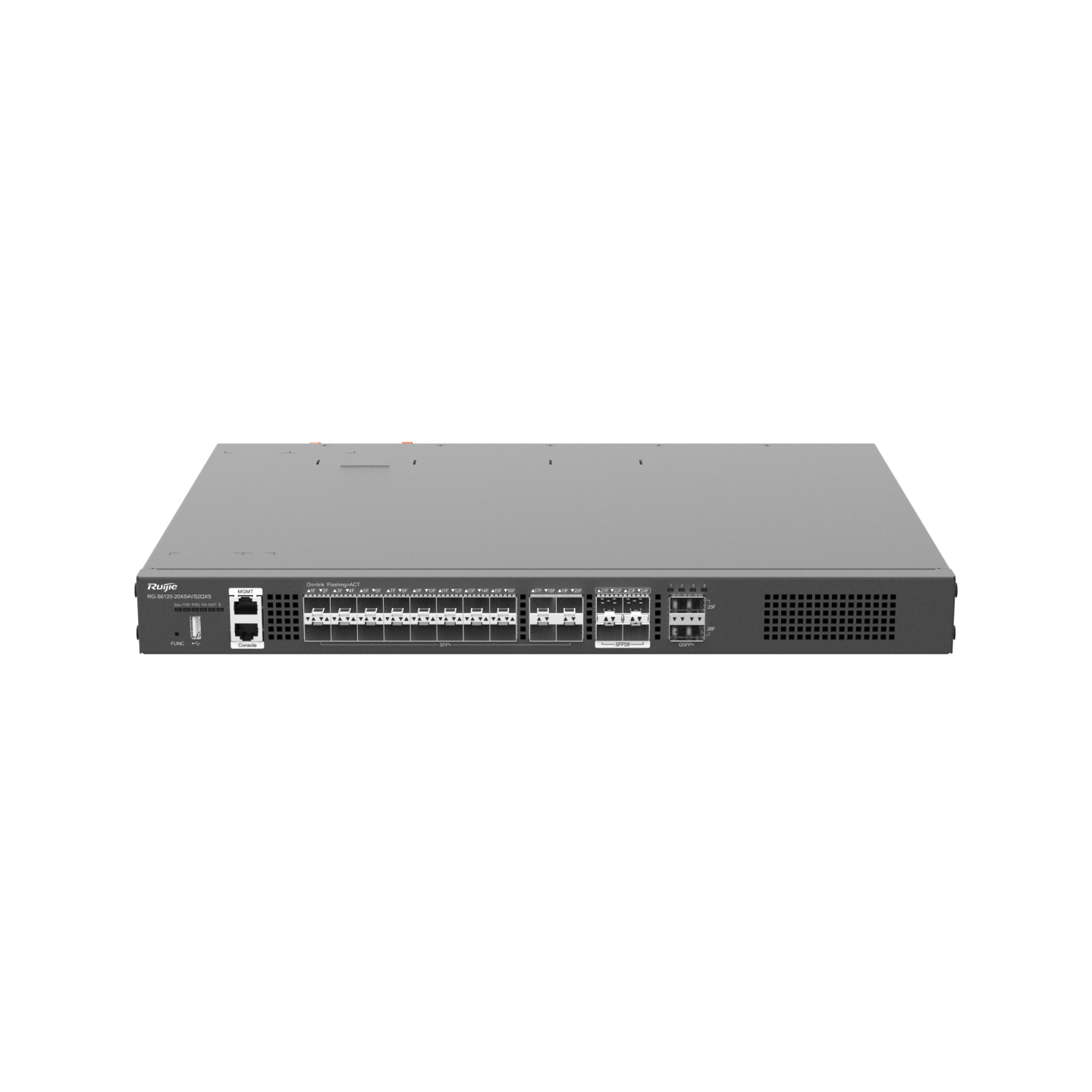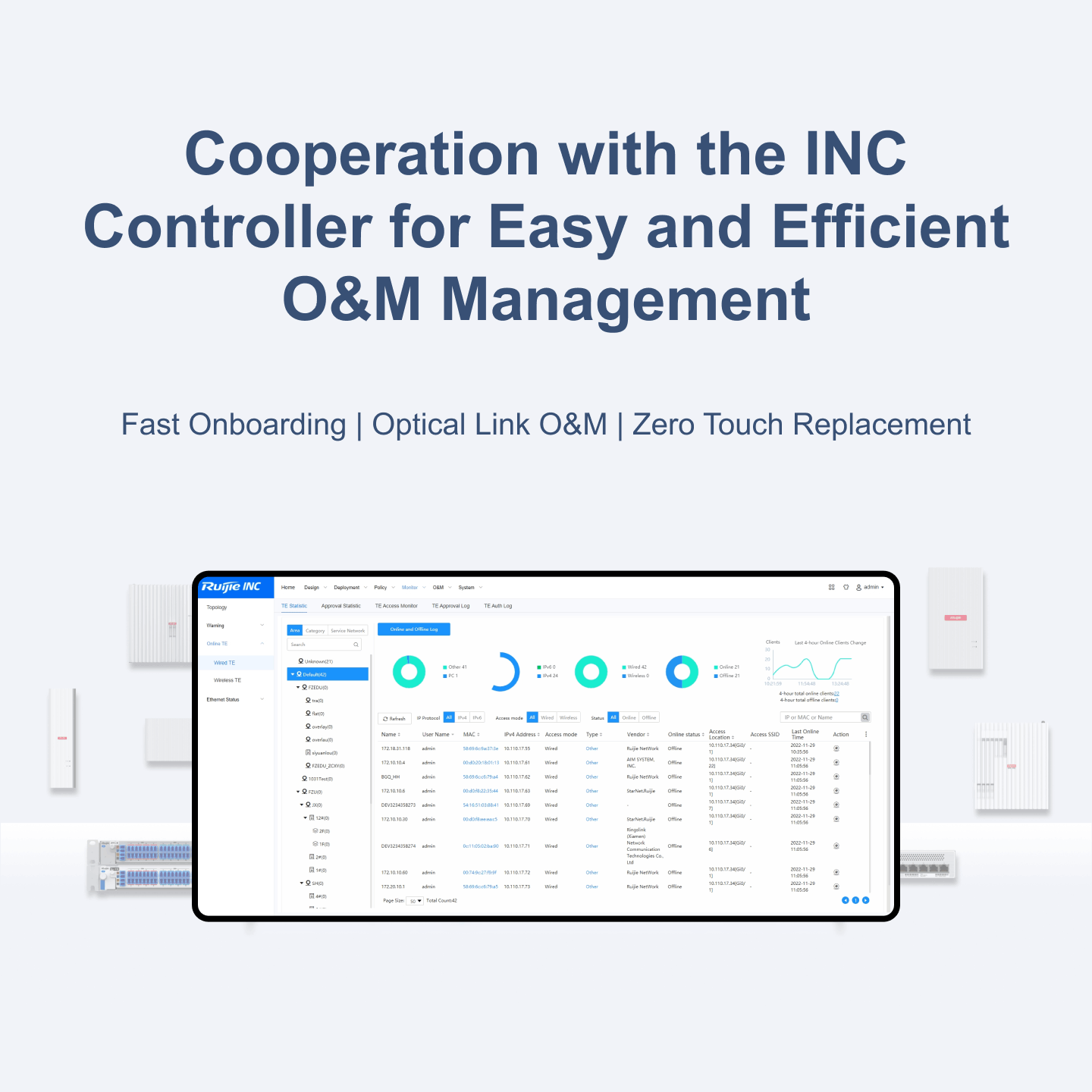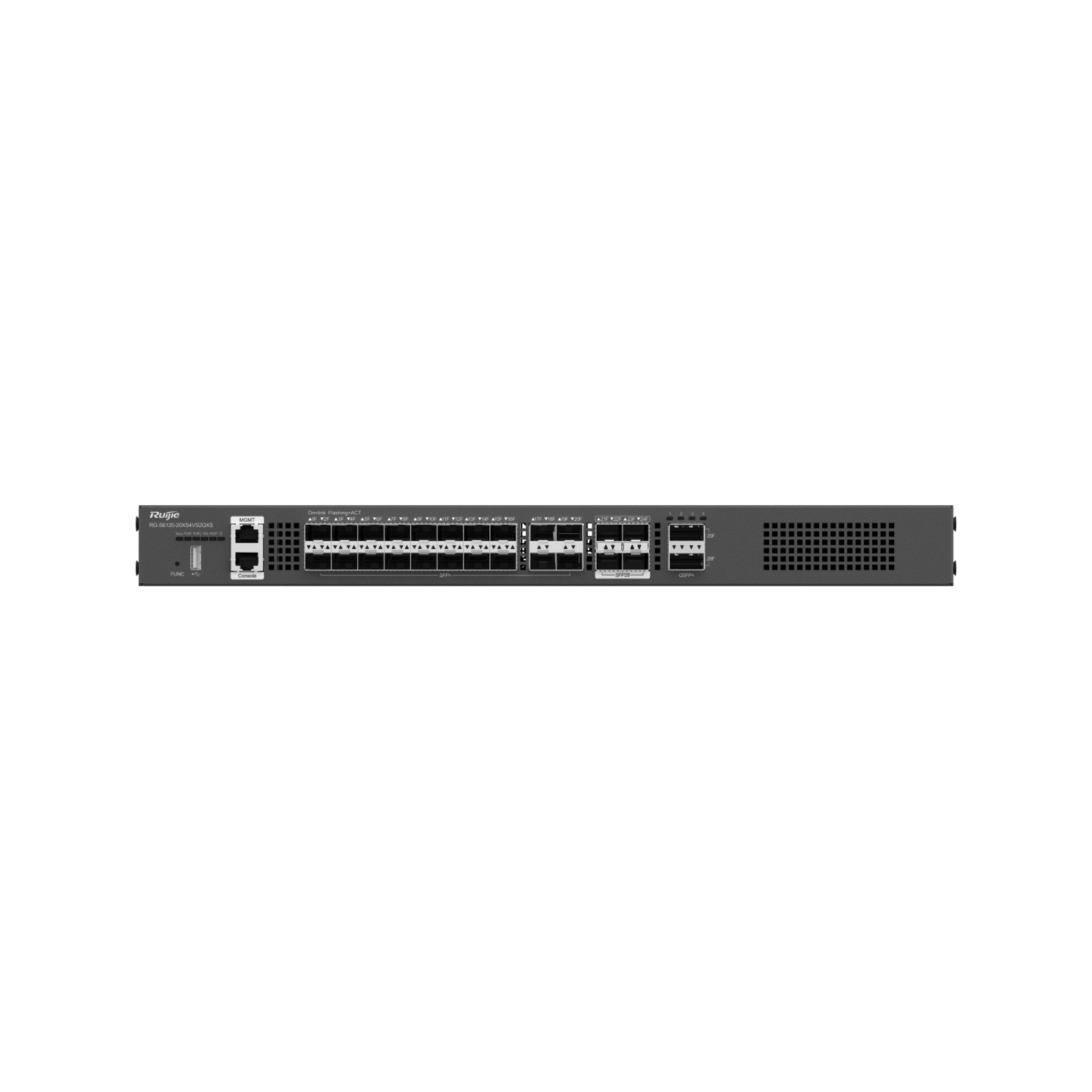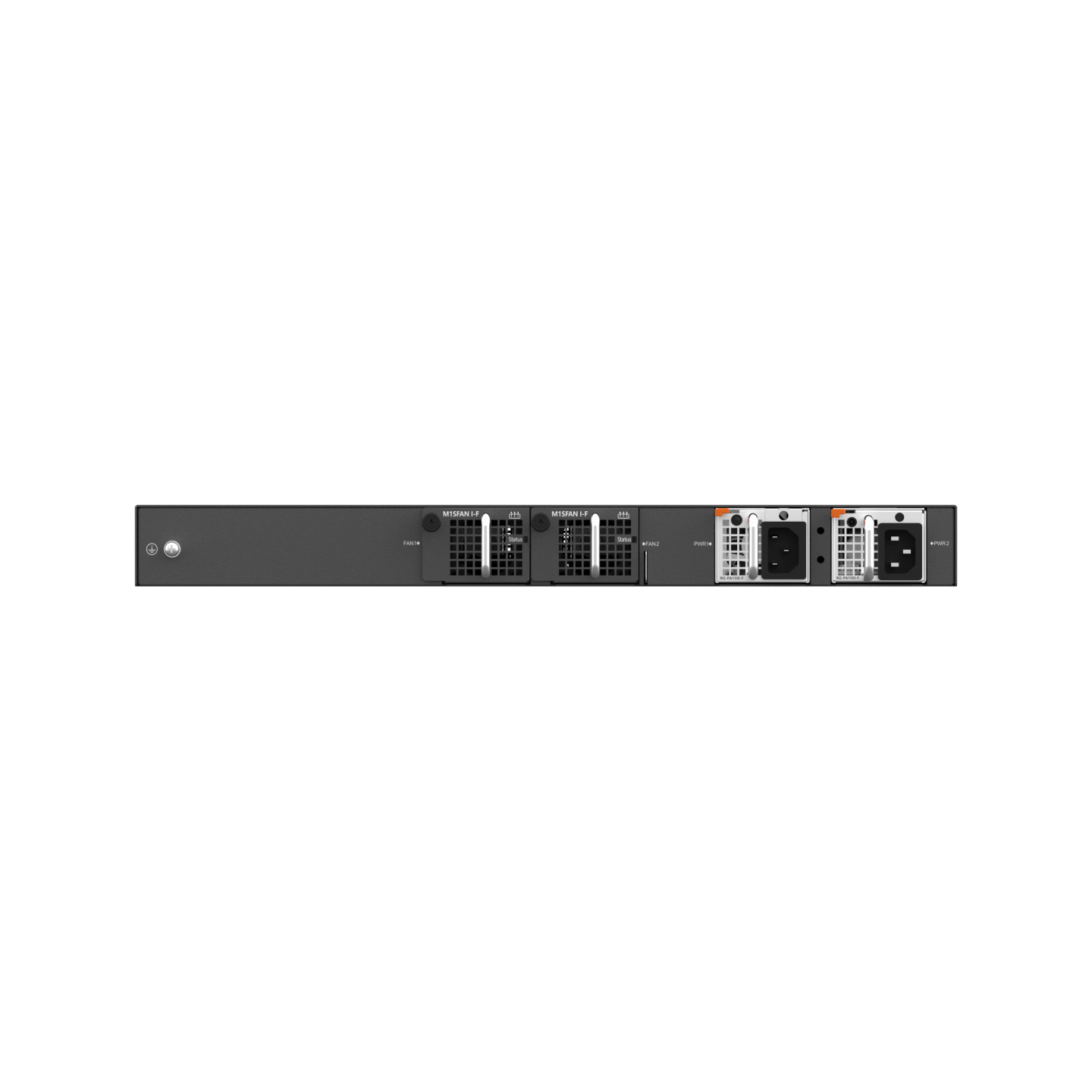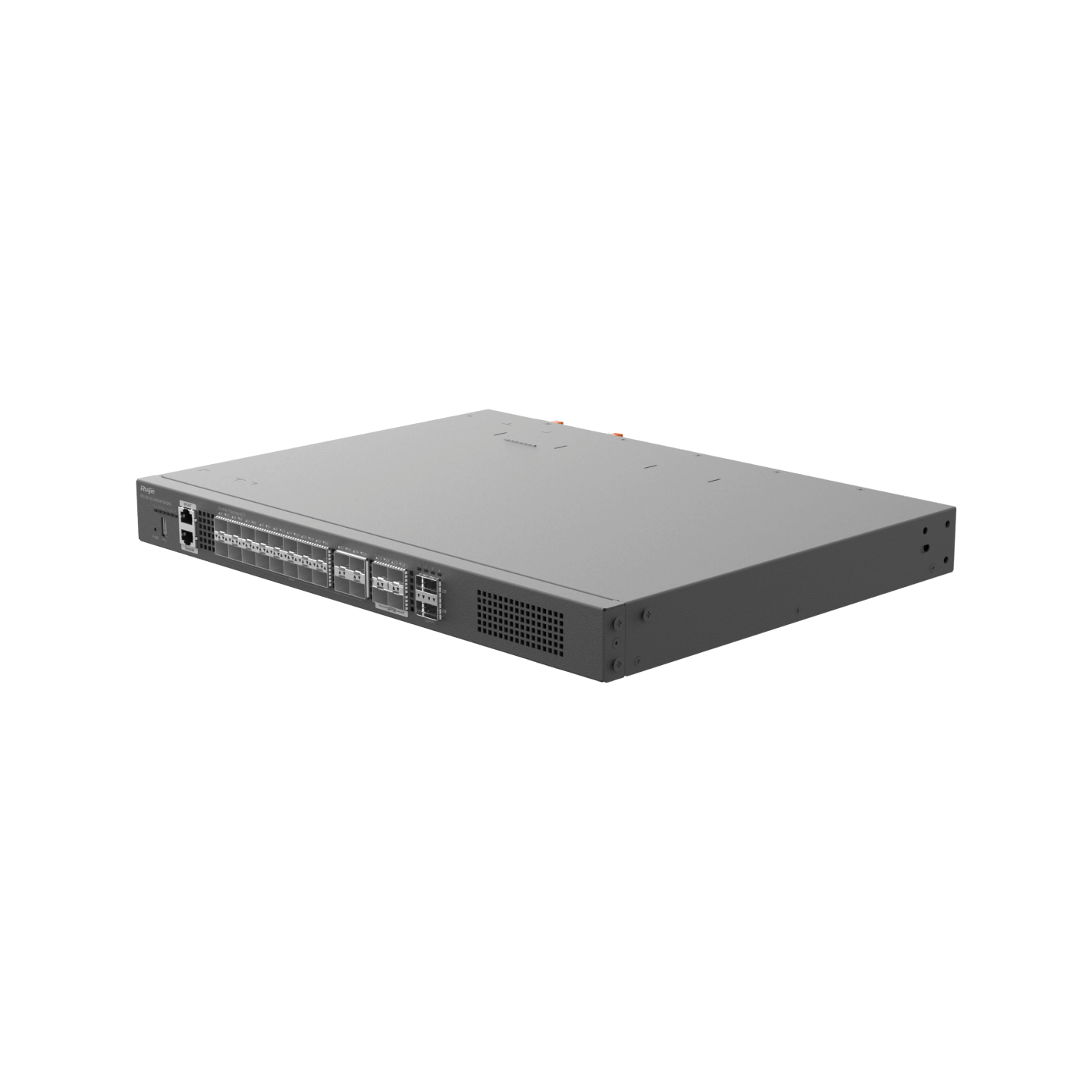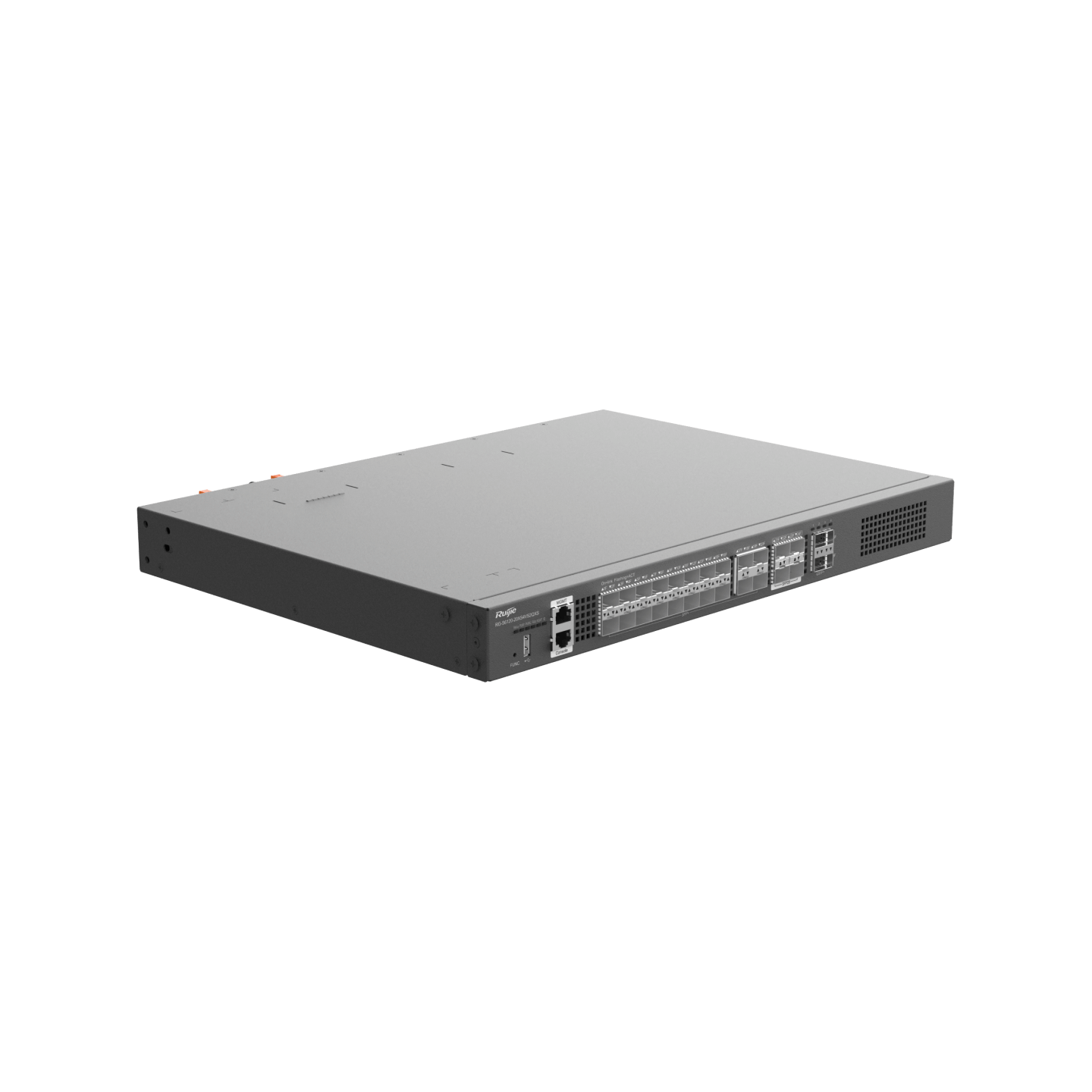| RG-S6120-20XS4VS2QXS |
| Feature |
Description |
| Ethernet Switching |
Jumbo frame (maximum length: 9,216 bytes) |
| IEEE 802.1Q (supporting 4K VLANs) |
| Maximum number of VLANs that can be created: 4,094 |
| Voice VLAN |
| Super-VLAN and private VLAN |
| MAC address-based, port-based, protocol-based, and IP subnet-based VLAN assignment |
| GVRP |
| Basic QinQ and selective QinQ |
| STP (IEEE 802.1.d), RSTP (IEEE 802.1w), and MSTP (IEEE 802.1s) |
| ERPS (G.8032) |
| LACP (IEEE 802.3ad) |
| LLDP/LLDP-MED |
| IP Service |
Static and dynamic ARP |
| DHCP server, DHCP client, DHCP relay, and DHCP snooping |
| DNS |
| DHCPv6 Client, DHCPv6 relay, and DHCPv6 snooping |
| Neighbor Discovery (ND) and ND snooping |
| IP Routing |
Static routing |
| RIP and RIPng |
| OSPFv2 and OSPFv3 |
| GR |
| IS-IS |
| BGP4 and BGP4+ |
| BGP4 and MP-BGP |
| Equal and Weighted Cost Multi-Path (ECMP) |
| IPv4/IPv6 VRF |
| IPv4/IPv6 PBR |
| Multicast |
IGMPv1/v2/v3 and IGMP proxy |
| IGMPv1/v2/v3 snooping |
| IGMP filtering and IGMP fast leave |
| PIM-DM, PIM-SM, and PIM-SSM |
| PIM-SSM for IPv4 and IPv6 |
| MLDv1/v2 |
| MLDv1/v2 snooping |
| MSDP |
| PIM-SMv6 |
| Multicast source IP address check Multicast source port check Validity check of IGMP packets |
| Multicast querier |
| ACL and QoS |
Standard IP ACLs (hardware ACLs based on IP addresses) |
| Extended IP ACLs (hardware ACLs based on IP addresses or TCP/UDP port numbers) |
| Extended MAC ACLs (hardware ACLs based on source MAC addresses, destination MAC addresses, and optional Ethernet type) |
| Expert-level ACLs (hardware ACLs based on flexible combinations of the VLAN ID, Ethernet type, MAC address, IP address, TCP/UDP port number, protocol type, and time range) |
| Time-based ACLs |
| ACL80 and IPv6 ACL |
| Applying ACLs globally (hardware ACLs based on flexible combinations of the VLAN ID, Ethernet type, MAC address, IP address, TCP/UDP port number, protocol type, and time range) |
| ACL redirection |
| Port traffic identification |
| Port traffic rate limiting |
| 802.1p/DSCP/ToS traffic classification |
| Traffic classification based on 802.1p priorities, DSCP priorities, and IP precedences |
| Traffic classification based on ToS values |
| Congestion management: SP, WRR, DRR, WFQ, SP+WRR, SP+DRR, and SP+WFQ |
| Congestion avoidance: tail drop, RED, and WRED |
| Eight queues on each port |
| Rate limiting in each queue |
| Security |
AAA |
| RADIUS and TACACS+ |
| Filtering of invalid MAC addresses Broadcast storm suppression Hierarchical management of administrators and password protection BPDU guard |
| RADIUS authentication and authorization |
| Port- and MAC address-based 802.1x authentication |
| IEEE802.1X authentication, MAC address bypass (MAB) authentication, and interface-based and MAC address-based 802.1X authentication |
| Web authentication |
| Hypertext Transfer Protocol Secure (HTTPS) |
| SSHv1 and SSHv2 |
| ICMPv6 |
| IPv6 addressing and Path MTU Discovery |
| Port security |
| IP source guard |
| SAVI |
| ARP spoofing prevention |
| CPP and NFPP |
| Various attack defense functions including NFPP, ARP anti-spoofing, DHCP/DHCPv6 attack defense, ICMP attack defense, ND attack defense, IP scanning attack defense, and customizing attack defense packet types |
| Loose and strict RPF uRPF ignoring default routes |
| Reliability |
REUP |
| Rapid Link Detection Protocol (RLDP), Layer 2 link connectivity detection, unidirectional link detection, and VLAN-based loop control |
| Data Link Detection Protocol (DLDP) |
| IPv4 VRRP v2/v3 and IPv6 VRRP |
| BFD |
| GR for RIP, OSPF, BGP, and other routing protocols Power modules in 1+1 redundancy mode Hot swapping of power modules and fan modules |
| Device virtualization |
VSU |
| NMS and maintenance |
SPAN, RSPAN, and ERSPAN |
| sFlow |
| NTP, SNTP, and NTP for IPv6 |
| FTP and TFTP FTP/TFTP v6 |
| SNMP v1/v2/v3 SNMP over IPv6 |
| RMON (1, 2, 3, 9) Various types of RMON groups, including event groups, alarm groups, history groups, and statistics groups, as well as private alarm extension groups RMON used to implement Ethernet statistics, historical statistics, and alarm functions |
| NETCONF |
| Flow-based mirroring, and N:1 and 1:N port mirroring |
| CWMP |
| gRPC |
| OpenFlow Special 1.3 Flow table analysis defined by all protocols Transmission of specified packets to the controller Configuring the controller's IP address and port Notifying port status changes to the controller |
| CLI (Telnet/console) Syslog IPv6 MIB support for SNMP Telnet v6 Traceroute v6 DNS v6 |
